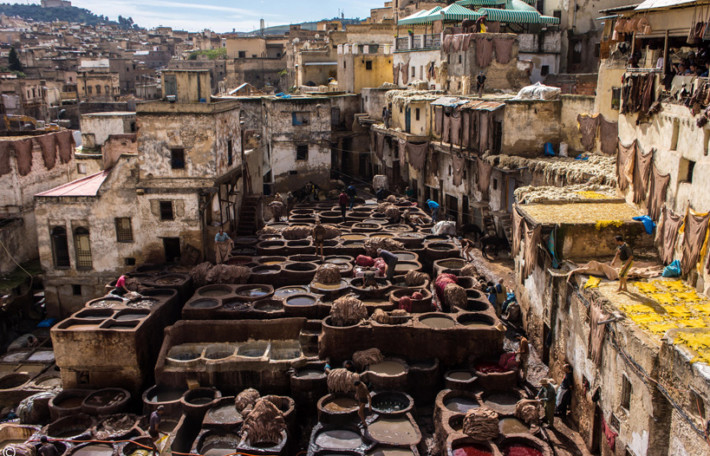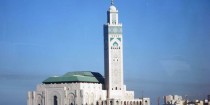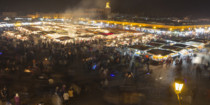Morocco’s fourth imperial city the others being Rabat, Marrakech, and Meknes. It comprises three distinct parts, Fes el Bali (the old, walled city), Fes-Jdid (new Fes, home of the Mellah) and the Ville Nouvelle (the French-created, newest section of Fes).
Fez el Bali is a UNESCO World Heritage Site. Its medina, the larger of the two medinas of Fes, is believed to be the world’s largest contiguous car-free urban area. The University of Al-Karaouine, founded in 859AD, is the oldest continuously functioning university in the world. It has been called the “Mecca of the West” and the Athena of Africa. The city was founded on a bank of the Fez River by Idris I in 789, founder of the Idrisid dynasty, the works being continued on the opposite bank by his son Idris II (808).
Arab immigration to Fes, including 800 Al-Andalusian families expelled after a rebellion which took place in Córdoba in 817–818, and other 2,000 families came down from Kairouan (Tunisia now) after another rebellion that took place in 824, gave the city a definite Arab character. The Kairouyine mosque is one of the oldest and largest in Africa, was built, together with the associated University of Al-Karaouine was founded (859).
Fes was populated by Muslims from elsewhere in North Africa, the Middle East, Moriscos (especially after the Spanish conquest of Granada in 1492), as well as many Jewish, who had their own quarter Mellah in the city. Most of the city’s population was of Berber descent, with rural Berbers from the surrounding countryside settling the city throughout its history.
Fes became the scientific and religious center, where both Muslims and Christians from Europe came to study. In 1250 it regained its capital status under the Marinid dynasty.
Fes was again the capital of Morocco until 1912, when most of Morocco came under French control and Rabat was chosen as the capital of the new colony, a status retained even when Morocco achieved independence in 1956. While many of the original inhabitants of Fes have since emigrated, the Jewish quarter has been emptied of its Jewish population. In 1465, there was a large massacre of Jews by Arab riots.
Despite the traditional character of most of the city, there is also a modern section, the Ville Nouvelle, or “New City”, which is a commercial center.



